Hawaiian Paradise Park, Hawaii

Despite the fact that Hawaii is one of the wealthiest states in the country with a median household income average of $74,900, 22.2% of residents who live in Hawaiian Paradise Park live below the poverty line.
With a population of 11,564 residents, the median household income in this city is approximately $51,900—higher than any other median income you’ll find on this list.
Red Cloud, Nebraska
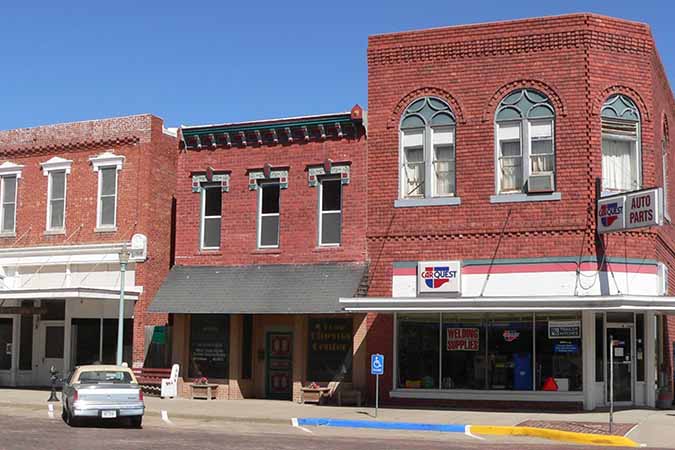
In Red Cloud, Nebraska, the median household income is approximately $35,700. This may be because of the 1,138 souls who live in Red Cloud, the median age is 50 and approximately 60% of all residents are at or around retirement age.
This puts the poverty rate in Red Cloud at a whopping 17.4% which is higher than Nebraska’s overall poverty rate of 12%.
Devils Lake, North Dakota
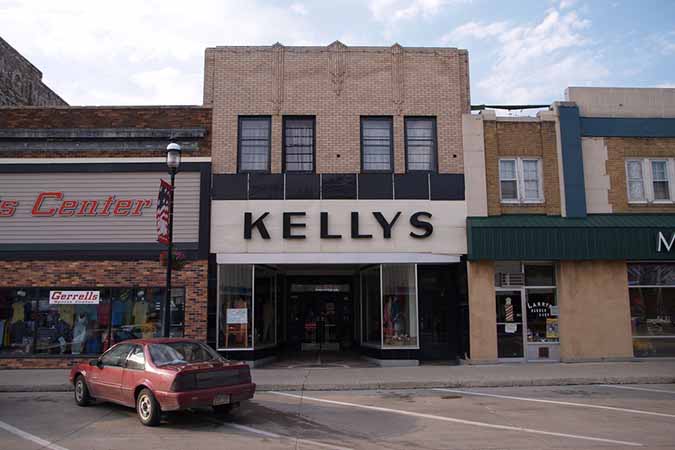
In Devils Lake, North Dakota 11.4% of the 7,313 residents live on less than $10,000 per year. Although the median household income is approximately $43,791, the poverty rate is up to 17%—more than the statewide average of 11%.
While Devils Lake’s unemployment rate is below the national average of 3.9%, they have recently seen the job market decrease by almost -8%. It is expected that the job market growth over the next 10 years will be just 16.9% which is less than half of the national average.
Wheatland, Wyoming

In Wheatland, Wyoming, the median household income is about $46,900 as compared to the statewide average of $60,900. With an income like that, very few of the city’s 3,617 residents face financial hardships.
Studies show that the level of a person’s education directly correlates to their income levels and the numbers show that Wheatland is the least educated city in the state of Wyoming with just 18.6% of all residents earning a bachelor’s degree or higher.
Fort Scott, Kansas

The poorest city in Kansas is Fort Scott with a population of approximately 7,822 residents. The median household income is $31,500 versus the statewide median income of $55,500 and the median home value is approximately $63,800.
According to Census data, more than 3,500 people commute into Fort Scott for work each day in the city’s manufacturing, healthcare, and education industries. However, according to smartgrowthamerica.org some citizens of the city feel that there is a lack of moderately priced housing that is needed to attract and retain skilled workers.
Onawa, Iowa
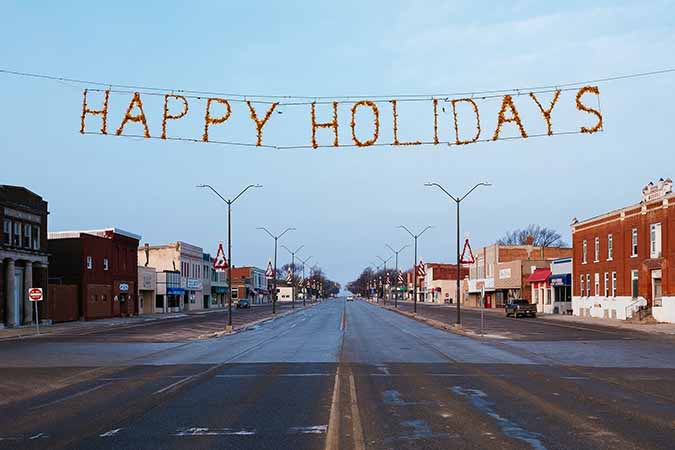
Onawa, Iowa is a tiny town with a population of just 2,849 residents. This town is so small, they only have six police officers and 10 businesses! The median household income is $31,100 as compared to the statewide average of $53,500.
However, more than one in four residents live below the poverty line, putting Onawa at the top of the poorest city list with a 25.3% poverty rate. At least 25% of Onawa’s residents receive SNAP benefits which is more than double the statewide average of 11.2%.
Littleton, New Hampshire
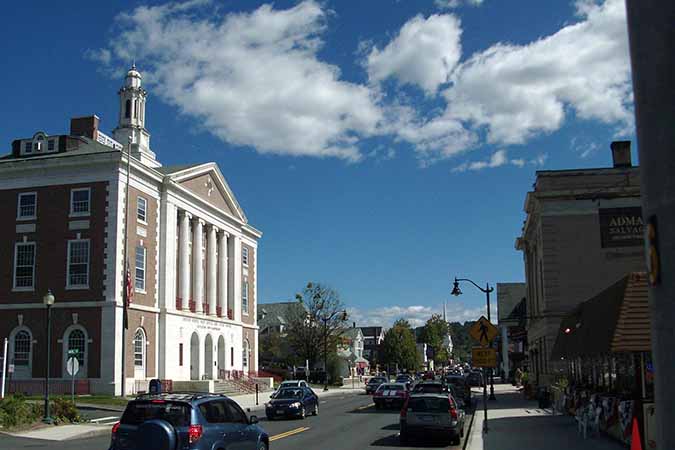
Although New Hampshire is typically one of the wealthiest states in the country, Littleton’s median household income is just $37,419 which is almost half of the state’s overall median income average of $71,305.
Of the 4,420 residents, one in five live below the poverty line which puts Littleton at double the state’s poverty rate and well above the national average of 14.6%.
Bensely, Virginia
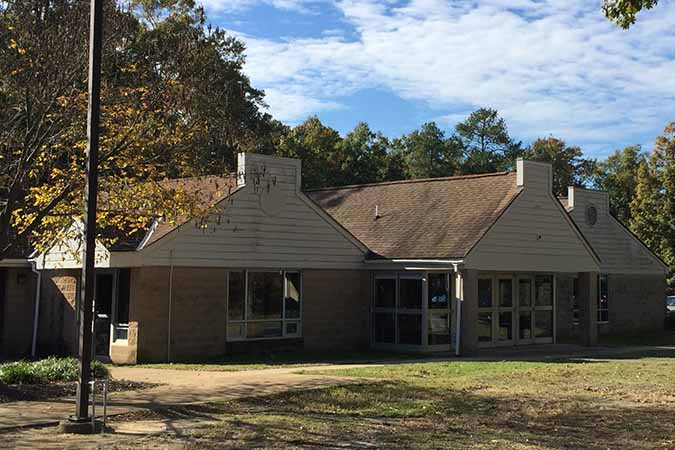
Bensely, with a population of about 6,363 residents, has a poverty rate of approximately 30% which is almost triple Virginia’s poverty rate at 11.2% and double the national average.
The median household income in Bensely is $37,692 versus the state’s median average of $68,766. Just one-third of Bensely’s adult population have a high school diploma as compared to the rest of the state at 89%.
Beckley, West Virginia

West Virginia’s overall median income of $44,000 is among one of the lowest of all the states, already. However, Beckley—population 16,963—has an even lower average median income of $39,695.
The poverty rate in Beckley is around 20% as more than one in five residents live below the poverty line.
Laughlin, Nevada

Laughlin, Nevada has a population of approximately 7,758 residents with a median household income of around $32,600. Despite being the third most popular tourist destination in Nevada, the city’s poverty rate is at 18.4%.
Laughlin has nine hotels/casinos and just under two million visitors per year. Nearly 60% of the city’s economy depends on the arts/entertainment/recreation and accommodation/food services industries.
Coquille, Oregon
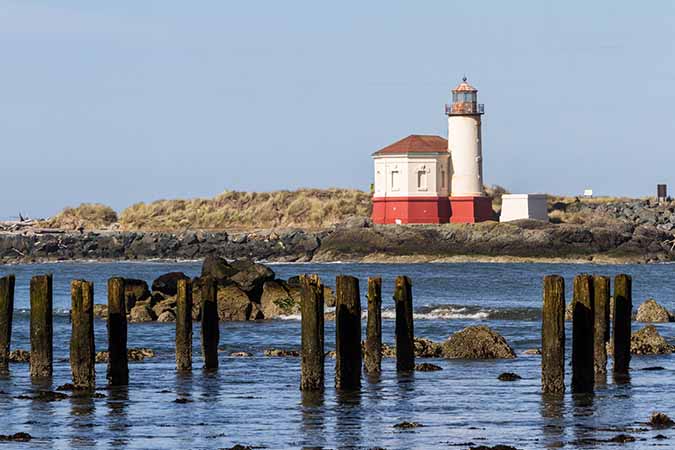
Coquille, a small town with a population of just 3,846, has a median household income of approximately $31,220 versus the state’s median income of $56,100. This quaint, quiet friendly community withing 20 minutes of the Pacific Ocean has a poverty rate of around 21.7%.
Coquille’s unemployment rate is at 7% versus the national average of 3.9% and approximately 50% of the town’s residents are not in the labor force, which could explain the high poverty rate.
South Salt Lake, Utah
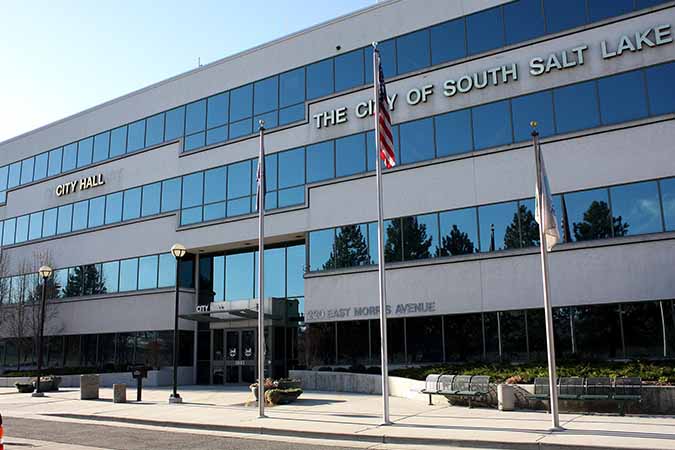
South Salt Lake, Utah has a population of 24,722 with a median household income of $41,450 versus the state’s median household income of $65,300. Even with an income over $40,000, the city has the state’s highest poverty rate at 22.5%—more than double the state’s average of 11%.
South Salt Lake’s unemployment rate is lower than the national average at 3.0% versus 3.9%; however, that number could reduce even further within the next ten years as job growth is expected to be at 41.3%, which is higher than the national average growth rate.
Holiday City - Berkeley, New Jersey

Holiday City – Berkeley is a retirement community where residents must be over the age of 55 in order to purchase or own property and to participate in community events. At the time of the last census in 2010, 72.8% of the population was aged 65 or older and the average family size was 2.13
The population in Holiday City – Berkeley is around 12,240 residents with a median household income of $35,200 versus the state’s average household income of $76,475. The poverty rate is just at 8.4%; less than the state’s average of 10.7%.
South Tucson, Arizona

With a population of about 11,210 residents, South Tucson’s median household income is approximately $21,160 while the state of Arizona’s average income is $53,510. In South Tucson, roughly 15% of residents earn less than $10,000 per year giving them a poverty rate of about 46.2%.
The unemployment rate in South Tucson is up to 8% while 45% of all residents are out of the labor force, leaving the 48% remaining residents to make up the labor force.
Ketchikan, Alaska
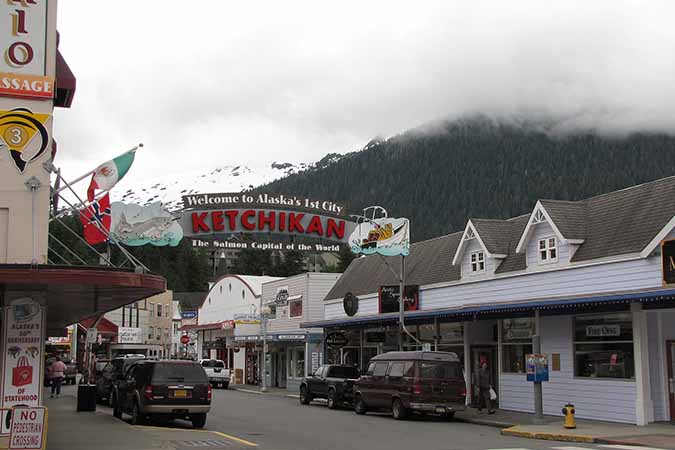
Alaska is another state that tops the list of the wealthiest states in the country with the third-highest median income of $76,114, but even they have their poorest city. Although Ketchikan’s median household income is $56,372, it’s only slightly lower than the national average median income, putting them in the “less likely to live below the poverty line” column.
Despite the higher income level, the city’s poverty rate is 12.4%. While still lower than the national average of 14.2%, it is still lower than the state’s overall average of 10.2%. Ketchikan’s unemployment rate is approximately 6.2%; almost double the 3.9% national average, which could explain the higher poverty rate.
Helena-West Helena, Arkansas
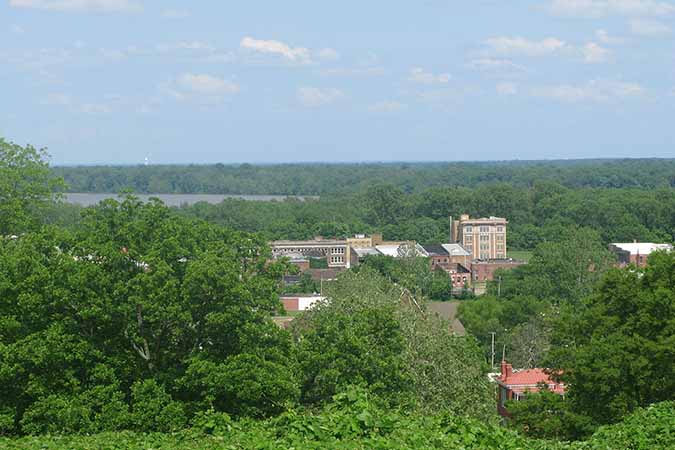
Arkansas is the second poorest state in the country with a median household income of about $48,813. However, Helena-West Helena trumps the state with a median household income of $21,667 giving them a 47.5% poverty rate versus the state’s average of 18.1%.
While the unemployment rate is high at 6%, 49% of the 11,210 residents are not a part of the labor force at all, leaving 45% of the population to make up the difference in income.
San Benito, Texas

Texas, one of the largest states in the country in terms of geography and population, has its fair share of poverty at a rate of 16% which is higher than the national average. San Benito—population of 24,474—is the poorest city in the state with a poverty rate of 37.4%.
The median household income in San Benito is approximately $26,583 versus the state’s median income of $57,000. As mentioned before, education level directly correlates with income level and only 11.7% of residents in San Benito have a bachelor’s degree or higher.
St Johnsbury, Vermont
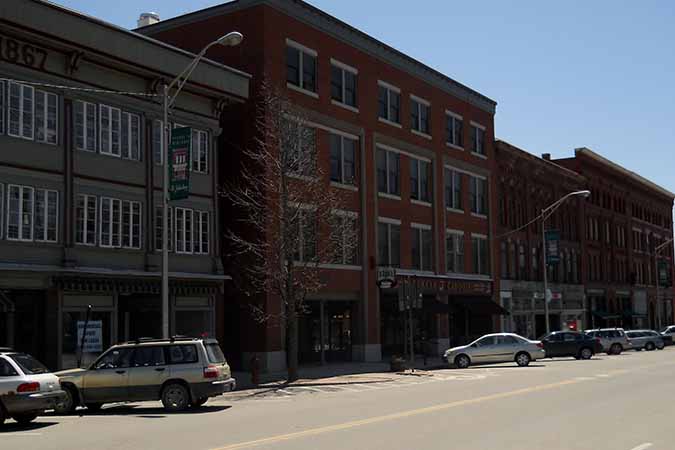
In Vermont, the state’s median household income is approximately $57,808 but in St Johnsbury the median household income is only about $36,958 making it the poorest city in the state. Despite the lower income, though, few residents face financial hardship.
Of the 5,789 residents, St Johnsbury’s unemployment rate is just two percent. The poverty rate of 15% could be explained by the 25% of residents living on retirement funds or social security income; however, only 2% of the population receives public assistance.
Whitewater, Wisconsin
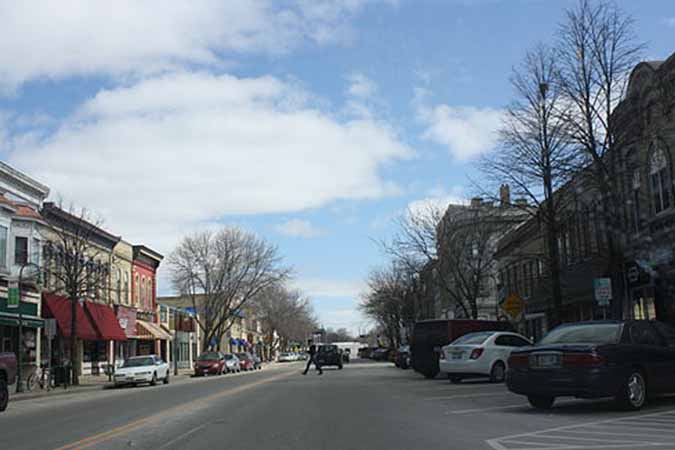
The median household income in Whitewater is around $31,827 as compared to the state’s median income of $56,759. This puts Whitewater at a 40.2% poverty rate which is more than triple the state’s poverty rate of 12.3%.
However, the low income of the city could be attributed to the more than 13,000 students who are enrolled at the University of Wisconsin Whitewater. This makes sense when the city’s main economic contributors are considered. The top industries in Whitewater are retail, food services, and education services.
Presque Isle, Maine
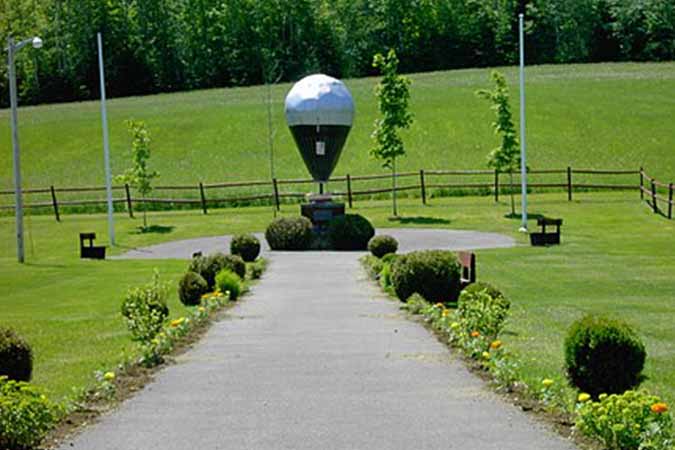
With a population of 9,246, Presque Isle is the only city in the state with a median household income below $40,000. As a matter of fact, their median household income is just $37,036 versus the state’s median income of $53,000.
12% of this town’s residents live with an income of less than $10,000 per year; however, Presque Isle is home to three colleges and universities which could be the reason for that.
Cumberland, Maryland
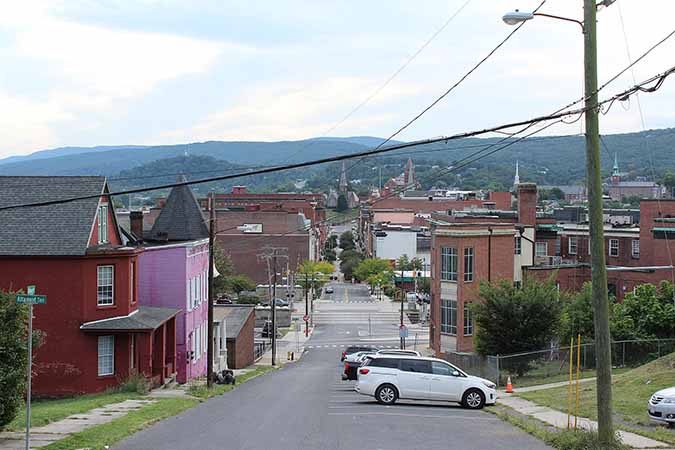
Maryland is the wealthiest state in the country with a median household income of $78,916 per year. However, in Cumberland, Maryland, one in four residents lives below the poverty line putting the poverty rate at 24.4%.
With a population of 20,084, Cumberland’s median household income is $32,825, ranking the city as one of the poorest towns in the country.
New Square, New York
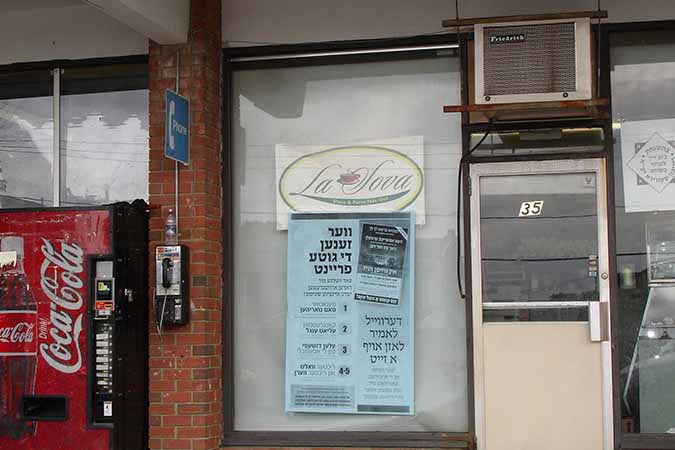
In the state of New York, the median household income is $63,000 while in New Square the median household income is just $23,900. Although New York does have the worst income inequality of any state, the poverty rate in New Square is the highest in the country at 64.4%.
New Square is made up of mostly Skverer Hasidic Jews who seek to maintain a Hasidic lifestyle disconnected from the secular world. Their main source of income comes mostly from educational services and retail trade.
North Adams, Massachusetts

Massachusetts, also one of the wealthiest states in the country has a median household income of $74,100 with a poverty rate of 11.1%. However, in North Adams, the median household income is just $38,774 with a poverty rate of approximately 17.8%.
North Adams is home to the Massachusetts College of Liberal Arts and more than 15 sites listed in the National Register of Historic Places making the city a center for tourism, culture, and recreation recently.
Brainerd, Minnesota
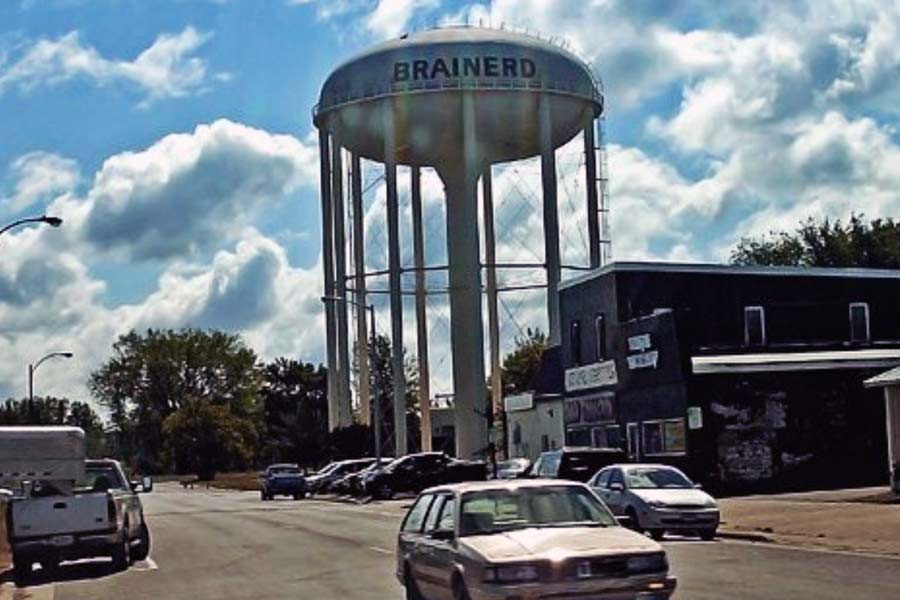
In the Brainerd Lakes Area of Minnesota lies a small city called Brainerd with a population of about 13,394 people. Although the median household income level in Minnesota is $65,699, Brainerd’s median household income average is just $34,358.
This is the only town in the state where more than 50% of households earn less than $35,000 per year. Although Brainerd itself has few lakes, there are approximately 460 lakes within a 25-mile distance from the city, making it a major tourist destination.
Claymont, Delaware
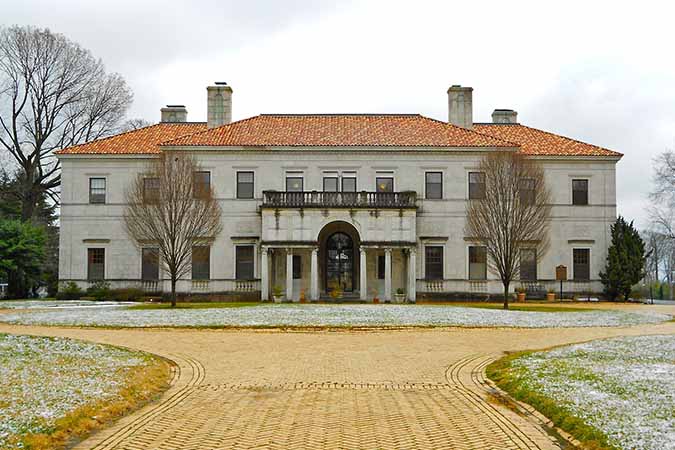
Although Delaware’s median household income is around $63,000, the median household income in Claymont is $52,200. Delaware is a geographically small state, so the incomes don’t vary as much as it does in other states.
However, despite being the poorest city in Delaware, this population really is not suffering much financial hardship. Although the unemployment rate in Claymont is almost double the national average, 63% of the city’s residents are employed with approximately 30% of all residents not in the labor force.
Knox, Indiana
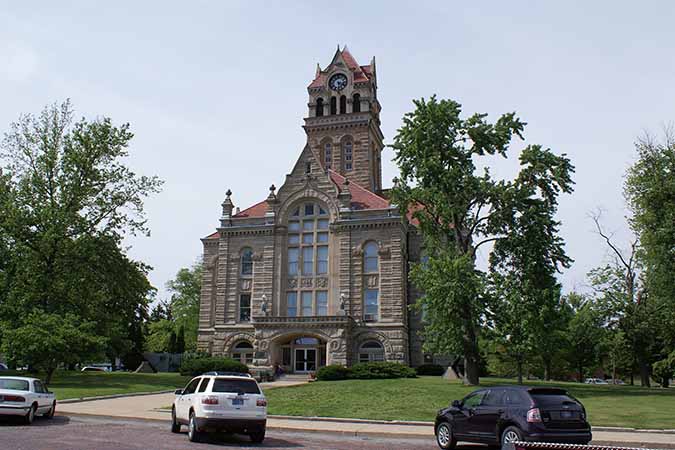
Indiana’s median household income is $52,100 but in Knox, the median household income is approximately $33,709 with a population of around 3,520 people. The poverty rate in Knox is 21.5% as compared to the state’s 14.6% average, overall.
The poverty rate might be explained by looking at the town’s workforce. The unemployment rate is at 4.4% with only about half of the town’s residents being employed. Approximately 47% of the town’s residents are not in the labor force.
Federal Heights, Colorado

With a population of about 12,450, Federal Heights has a median household income of $38,328 as compared to the state’s median household income of approximately $65,458. In this case, education correlates directly to income as only 10.8% of adults in the city have attained a bachelor’s degree or higher.
Located in the Denver Metropolitan Region, Federal Heights is home to Water World, one of the biggest water parks in the entire country. Besides income from the water park, the city’s main sources of income come primarily from construction and manufacturing. The job market in Federal Heights is expected to grow by 44% over the next ten years according to bestplaces.net.
Brunswick, Georgia
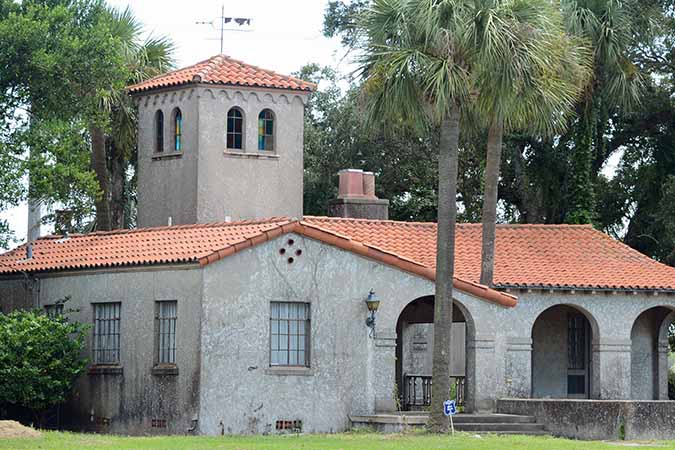
In Brunswick, Georgia—population 15,919—the median household income is around $24,417 versus the state’s median income of $52,977. This puts the poverty rate in Brunswick at 39%; one of the highest in the country let alone the state.
More than one-third of Brunswick residents depend on SNAP benefits for groceries. This is more than double the state-wide rate of 14.5%. Their economy is largely based on tourism and logistics and was named as a Forbes “Best Small Place for Businesses and Careers” in 2013.
Fredericktown, Missouri

For the state of Missouri, the median household income is around $51,540 but in Fredericktown, the median income is approximately $24,640. With a population of around 3,999 residents, just 16% of all adults have a bachelor’s degree or higher and the poverty rate is at 28.9%.
The biggest draw to this city lies in its geological value. Fredericktown is very unique in that a variety of minerals and metals have been mined within 20 miles including copper, silver, cobalt, iron, lead, gold, nickel, zinc, and tungsten.
Central, South Carolina

South Carolina is already touted as one of the poorest states in the country with a median household income of approximately $48,781. However, in Central, the median income is just $26,623. This gives Central a poverty rate of 41% as approximately 5% of all residents rely on SNAP benefits.
Central’s location could explain why the income levels are so low and the poverty rate is so high. It is home to Southern Wesleyan University as well as being located next to the city that houses Clemson University and Tri-County Technical College. Many of these college students live in Central and are not in the workforce yet.
Belle Glade, Florida
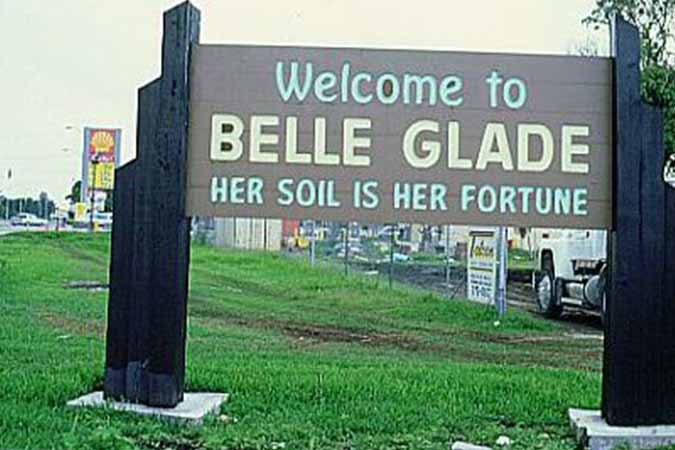
In Belle Glade, the poverty rate is 39.1% with one in four households earning less than $10,000 per year. Belle Glade’s population of 19,175 people have a median household income of around $25,873 versus the state’s median income of $50,883.
Approximately 20% of Belle Glade’s income derives from agriculture, but the local sugar cane plant only employs around 550 workers, seasonally.
Central Falls, Rhode Island

With an area of only 1.29 square miles, Central Fall’s population of 19,395 residents makes it the smallest and most densely populated city in an already small state. The median household income in Central Falls is around $31,000 per year versus the state’s median income of $61,043.
Since education is closely correlated with income levels, it is easy to see where Central Falls falls short—only 8% of adults have attained a bachelor’s degree or higher as compared to the rest of Rhode Island with an average of 30% of adults with bachelor’s degrees.
Chewelah, Washington
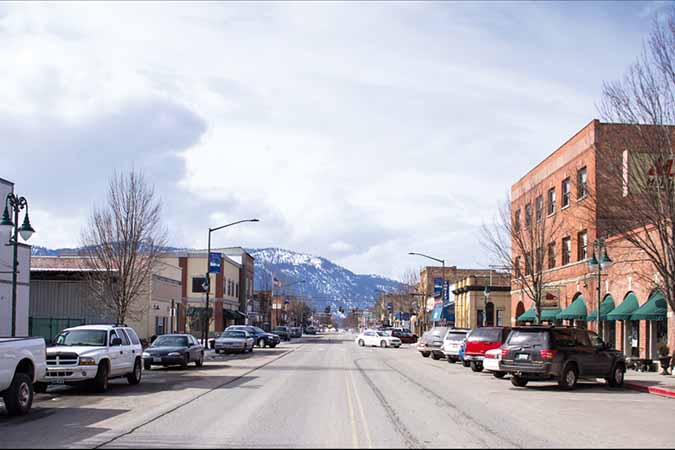
In Chewelah, the population is just 2,601 but has a poverty rate of about 20% versus the state’s poverty rate of 12.2%. The median household income here is $31,900 while the state’s median income is somewhere closer to $66,100.
The town was once prosperous, providing much of the country’s magnesite ore until the late 1960s when the magnesite plant closed. The city’s current mainstays are irrigated farming, ranching, and dairy farming.
Johnstown, Pennsylvania
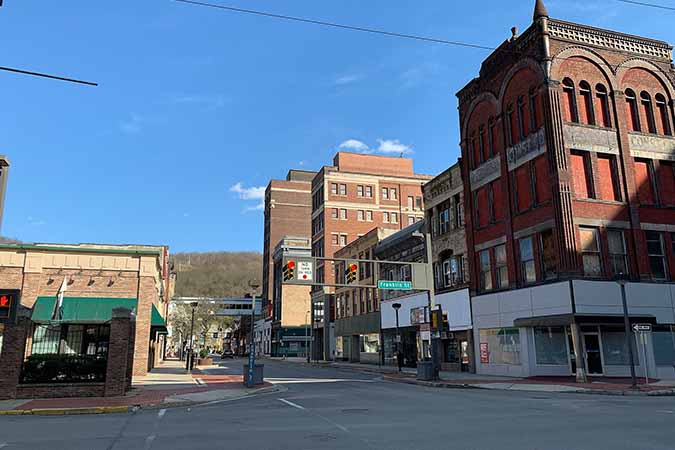
Although Pennsylvania is home to some of the poorest towns in the country, Johnstown wins the poorest city in the state award with a median household income of $23,600 and a poverty rate of 37.9%.
With a population of 19,967, Johnstown’s unemployment rate is at 6.6%; almost double the national unemployment rate, which could explain the low-income rate of the city overall.
Sisseton, South Dakota
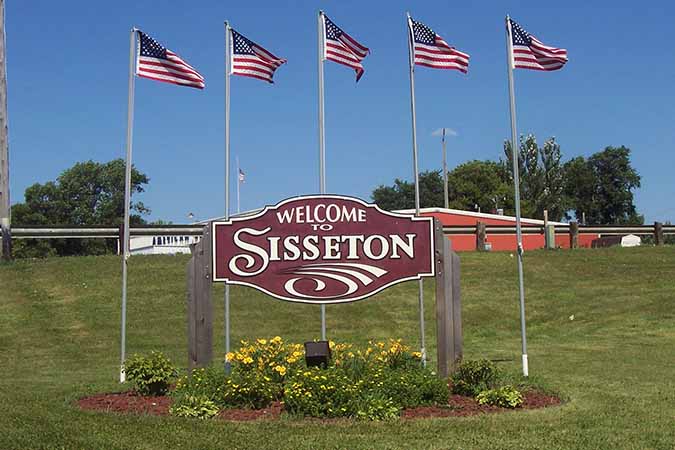
Although the median household income in Sisseton is 38,500 versus the state’s median income of $54,100, 8.4% of the residents there earn less than $10,000 per year. This puts the city’s poverty rate at about 22.5%, almost double the state’s poverty rate of 14.5%.
At least one of every five residents rely on SNAP benefits, which more than doubles the 10.6% rate throughout the state. Sisseton’s main sources of income are construction, manufacturing, medical services, and retail trade.
Bonner’s Ferry, Idaho
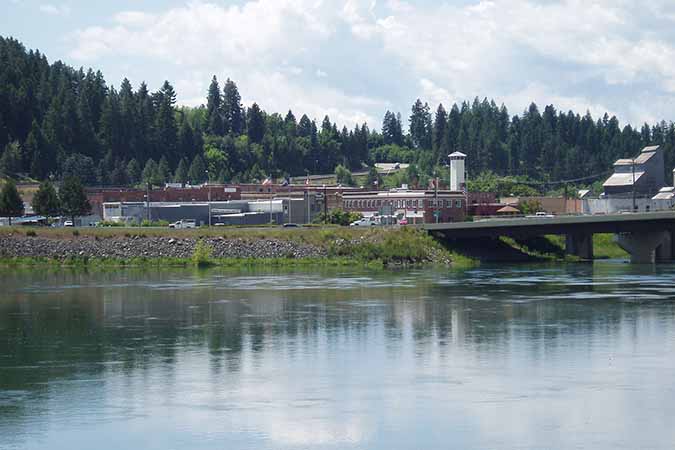
In Bonner’s Ferry, the main source of income lies in the timber industry and annual wages for loggers are typically lower than other jobs. The median household income here is $30,900 versus the state’s median income of about $51,000.
The poverty rate in Bonner’s Ferry is at 22.5% and their other main sources of income lie in agriculture and the town’s mines.
Hamtramck, Michigan
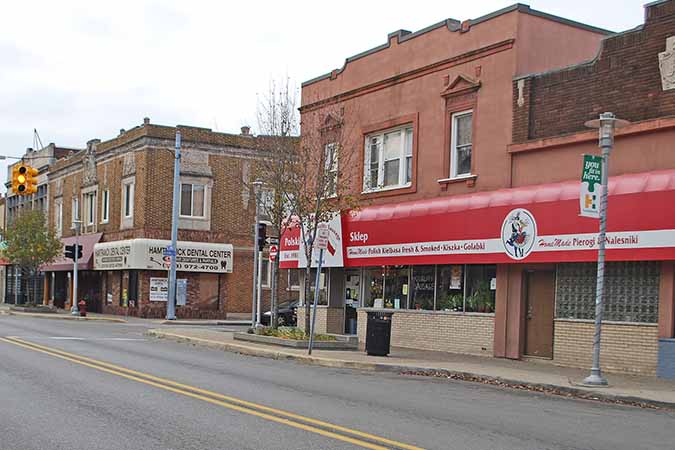
Hamtramck is one of the poorest towns in the entire United States with approximately 45% of the 21,959 residents relying on SNAP benefits to get by. The median household income in Hamtramck is approximately $24,400 versus the state’s median income of $52,668.
Both General Motors Detroit/Hamtramck Assembly plant and Detroit Axle closed plants in Hamtramck between 2009 and 2019, eliminating several hundred jobs.
Camden, Tennessee

Tennessee’s median household income across the state is around $48,708 with a poverty rate of 16.7%. In the city of Camden, the median household income is at $28,750 with a poverty rate of 25.1%. With a population of 3,554, this means that more than one in every four residents live below the rate of poverty.
These low numbers could be the result of 54% of Camden’s population not being in the labor force at all while 43% of the population are employed. Despite the high poverty rate and the lower income level, only 2% of Camden’s residents are unemployed.
Deming, New Mexico
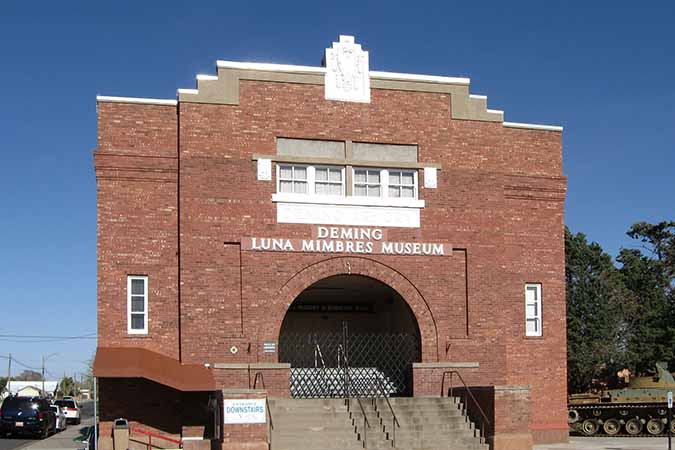
With a population of approximately 14,340 the median household income of Deming is $25,430 versus the state’s median income of $46,718. The poverty rate in Deming is 34.3% with approximately 20% of the population earning less than $10,000 per year.
Deming’s economy is based on transportation, real estate, agriculture, energy, retirement, tourism, and the United State Department of Homeland Security as Border Patrol vehicles make up a large portion of road traffic.
Clearlake, California

In California, the median household income is approximately $67,200 but in Clearlake, the median income is closer to $27,000. The home value in Clearlake is approximately $93,900 while the state’s average home value is closer to $443,400. Clearlake is the only town in which home values are less than $100,000 as California real estate is usually quite expensive.
The biggest industry is tourism as Clearlake is home to Clear Lake, “the Bass Capital of the West.” Since they are a tourist attraction, their second biggest industry in the town is accommodations/food services.
East Cleveland, Ohio
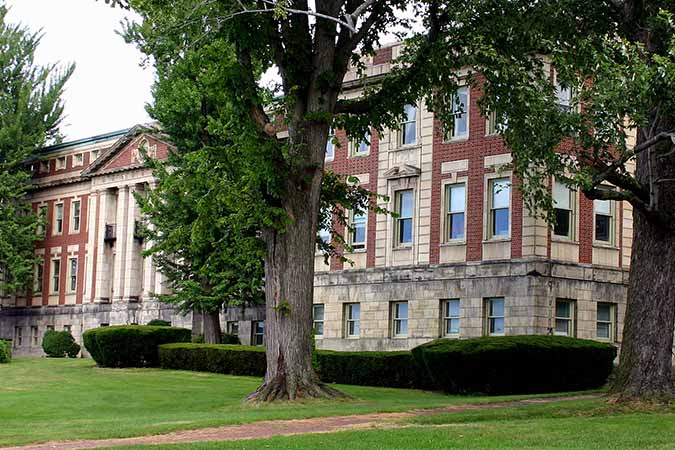
The population for East Cleveland, Ohio is around 17,375 residents and at least one quarter of them earn less than $10,000 per year. The median household income there is $21,190 versus the state’s median income of $52,400. This puts the poverty rate for East Cleveland at 40.5% and at least 41.9% of the population depend on SNAP benefits.
As education directly relates to income, part of the reason for the high poverty rate could be that only 11.9% of adults in East Cleveland have earned bachelor’s degrees. The biggest industry in the city is healthcare as East Cleveland is home to at least three medical facilities, making up approximately 30% of their economy.
Selma, AL

The median household income in Selma is approximately $24,220 versus Alabama’s median income of $46,470. Although Alabama has a relatively high rate of poverty at 18% (more than the national average) Selma’s is even higher at 38.3%.
A relatively large portion of the population of Selma relies on SNAP benefits at 38%—double the state’s average of 15%. The city also has an unemployment rate of 7.3% versus the national average of 3.9%. Since 2010, Selma has lost 8.5% of the population, but this trend isn't strange for the town. Since 1970, Selma has been losing citizens at a steady rate.
Glasgow, Kentucky
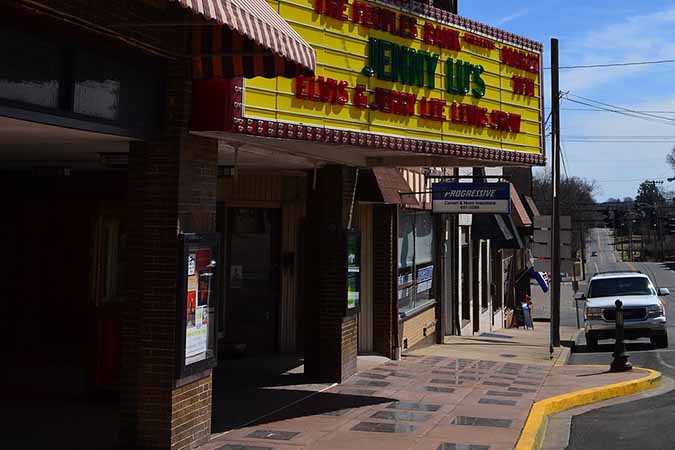
Kentucky as a state already ranks fifth in the United States’ poorest states. The median household income in the state is just $46,500, but in Glasgow the median income is just $30,731. The poverty rate for Glasgow is at 29% versus the 18.3% poverty rate of the entire state.
In Glasgow, the unemployment rate is at 4.3%, possibly explaining the higher poverty rate for the city.
Wewoka, Oklahoma
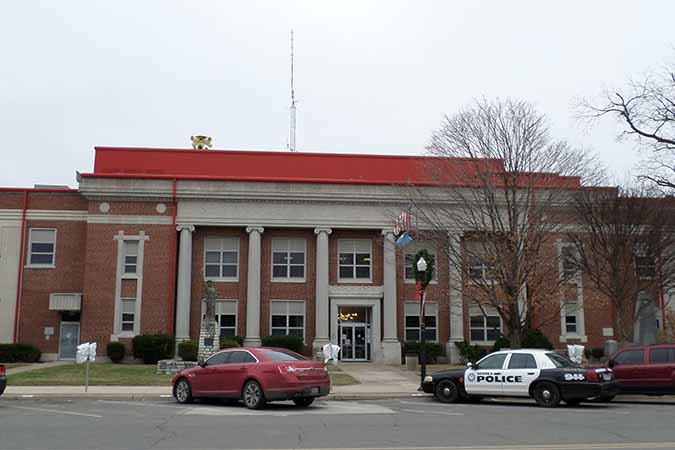
The median household income in the state of Oklahoma is about $49,767 while the median household income in Wewoka, Oklahoma is just $25,567. This is just one of two towns in Oklahoma where the home value is below $50,000.
In Wewoka, of the 3,396 residents, just 11% have a bachelor’s degree or higher and the poverty rate is at 41.7%; more than double the state’s poverty rate of 16.2%. The unemployment rate in Wewoka is also at 5.1% and at least one-third of residents rely on SNAP benefits.
Forest City, North Carolina

In Forest City, where the population is 7,250, the poverty rate is at 37.4%. The median household income is just $24,383 versus the state’s average of $50,320. Also, in Forest City, the unemployment rate is at 9%—the highest in the country—versus the national average of 3.9%. 37.7% of all residents here rely on SNAP benefits.
The contributing factor in the low-income rate could be that approximately 51 percent of Forest City’s population are not members of the labor force and at least 40% of the population rely on retirement funds and social security income.
Conrad, Montana
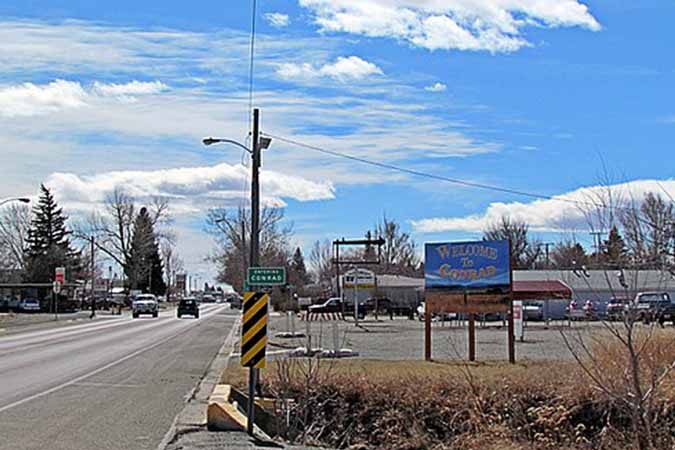
In Montana, the median household income is $50,800 compared to the city of Conrad’s median income of $43,370. However, this city is far from being poor. The median income is not much lower than the state’s average and the poverty rate is only at 16% versus the state’s average of 14.4%.
Conrad’s unemployment rate is only at 1%, and at least 60% of the population earn a living. However, at least 40% of the city’s population aren’t in the labor force at all, leaving the other 60% of the population to make up the difference.
Centreville, Illinois
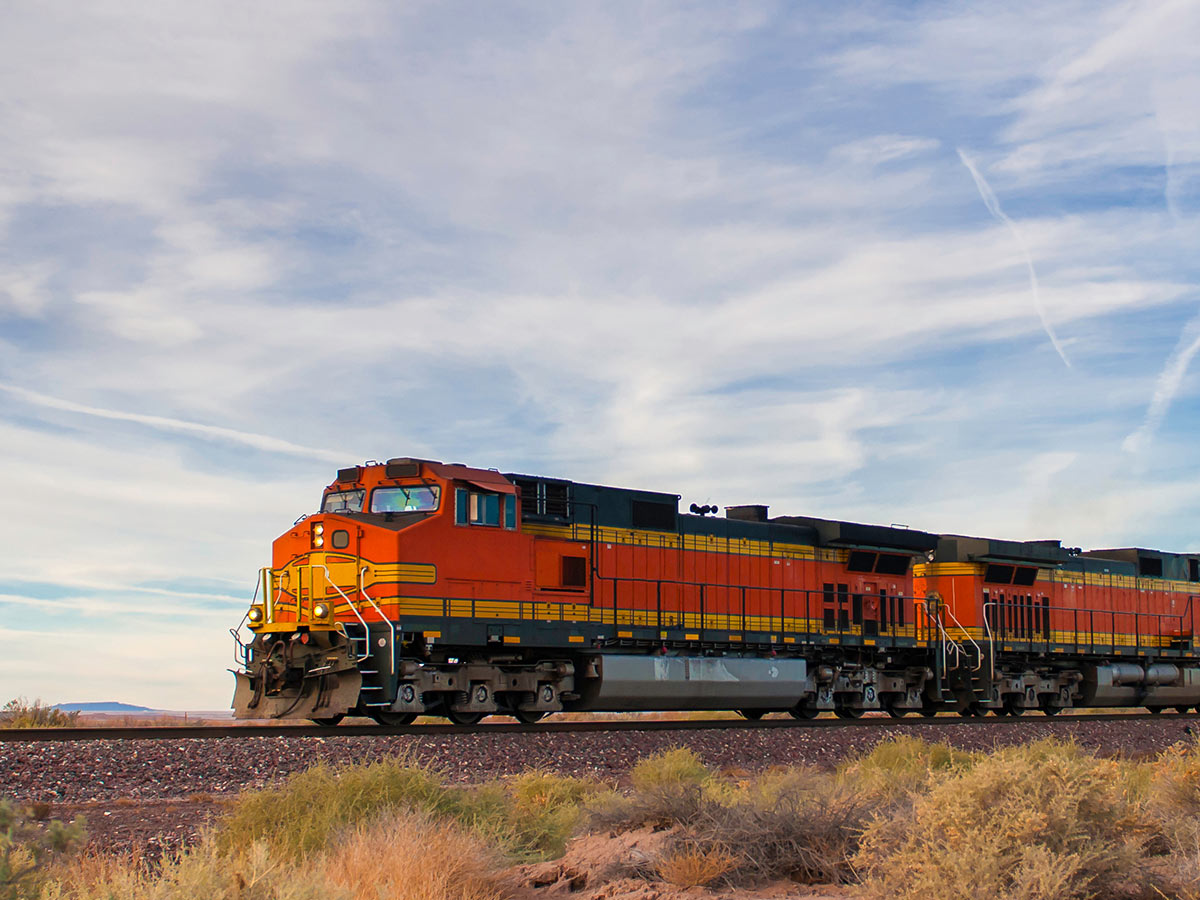
With a population of 5,094 residents, and a median household income of $17,440, Centreville is officially the poorest town in the country with a poverty rate of 48.1%. 36.9% of the town’s residents rely on SNAP benefits versus the state’s overall average of 13.3%.
Approximately 56% of the population rely on retirement benefits, SSI, or public assistance. 37% of the town’s residents have jobs while 7% rely on unemployment benefits. 20% of the economy comes from the healthcare and social assistance industry, with retail and manufacturing trailing behind.
Willimantic, Connecticut

While Connecticut is a relatively wealthy state with a median household income of $73,780, Willimantic does not fare as well. With a population of around 17,550 residents, the median household income is $33,560 with a poverty rate of 29.9%.
In Willimantic, more than one-third of residents rely on SNAP benefits while 38% of the population are not a part of the labor force, and at least 7% rely on unemployment. 22% of Willimantic’s economy stems from education services as the city is home to three high schools, a university, and a community college.
Vicksburg, Mississippi
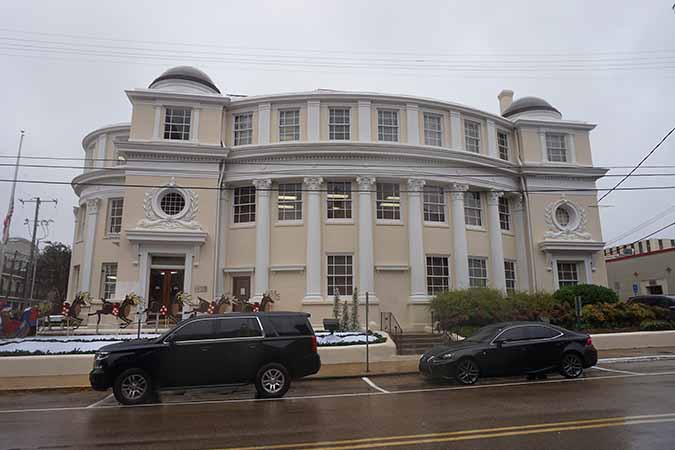
Mississippi is ranked as the poorest state in the entire country with a median household income of just $42,000 and a poverty rate of about 20%. In Vicksburg, the median household income is $29,800 with a poverty rate of 36.1%.
Only half of Vicksburg’s residents are employed, while 4% are unemployed, and the other 45% of residents not in the labor force at all. More than one-third of the city’s 22,961 residents rely on SNAP benefits for food.
Bastrop, Louisiana

While Louisiana is ranked as one of the poorest states, the median household income average is about $53,024 which is just below the national average. However, the median household income in Bastrop is $37,000 with a poverty rate of 23.2%, and more than one-third of residents relying on SNAP benefits.
Healthcare accounts for approximately 25% of the economy in Bastrop while manufacturing runs a close second. Of the city’s 9,246 citizens, only 43% are employed.
 Author
Ron Winkler
Last Updated: December 15, 2025
Author
Ron Winkler
Last Updated: December 15, 2025